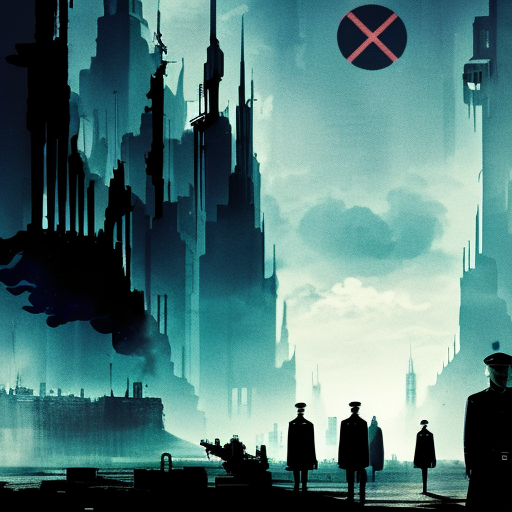The Man in the High Castle: A World Where the Axis Powers Won World War II
In Philip K. Dick’s alternate history novel, “The Man in the High Castle,” the Axis Powers have emerged victorious in World War II, resulting in a divided United States. The story takes place in a dystopian 1962, where the Japanese control the west coast, the Nazis dominate the east coast, and a neutral zone exists in the middle. Amidst this backdrop, the lives of various characters intertwine as they navigate a world shaped by totalitarian regimes, resistance movements, and the search for a mysterious author who has written a book depicting an alternate reality where the Allies won the war.
A Glimpse into a Dark and Divided America
“The Man in the High Castle” offers readers a chilling glimpse into a world where the Axis Powers have triumphed, forever altering the course of history. The novel explores the consequences of this alternate reality, painting a picture of a divided America under totalitarian rule. The Japanese control the Pacific States of America (PSA), while the Nazis reign over the Greater Nazi Reich on the east coast. In the neutral zone, which encompasses the Rocky Mountain states, a fragile balance exists between the two superpowers.
An Intricate Web of Characters and Storylines
Dick weaves together multiple storylines, each offering a unique perspective on life in this alternate reality. We follow the lives of characters such as Juliana Frink, a young woman who becomes involved with the resistance movement; Frank Frink, Juliana’s estranged husband who struggles to find his place in this new world; and Robert Childan, a dealer of Americana who caters to the Japanese elite. As their paths intersect, the characters grapple with their own moral dilemmas, loyalty, and the search for truth.
The Quest for the Mysterious Author
At the center of the novel is the quest to find the author of a banned book titled “The Grasshopper Lies Heavy.” This book presents an alternate reality where the Allies won World War II, offering a glimmer of hope to those who dare to dream of a different future. As characters become obsessed with finding the author, they embark on a journey that challenges their beliefs, forces them to confront their own desires, and raises questions about the nature of reality itself.
Key takeaways from “The Man in the High Castle”:
- Alternate history: The novel explores the concept of alternate history, inviting readers to consider the profound impact that different outcomes in historical events can have on the world.
- Power and control: The book delves into the themes of power and control, illustrating the devastating consequences of totalitarian rule and the lengths individuals will go to maintain or resist it.
- Perception and reality: “The Man in the High Castle” raises thought-provoking questions about the nature of reality and the subjective nature of truth, challenging readers to question their own perceptions of the world.
“For everything in this world, there is a price. That is one of the lessons of the I Ching.”
In conclusion, “The Man in the High Castle” presents a haunting and thought-provoking vision of an alternate reality where the Axis Powers emerged victorious in World War II. Through its intricate web of characters and storylines, the novel explores themes of power, control, and the search for truth. It serves as a reminder of the importance of understanding history and the potential consequences of different outcomes.












